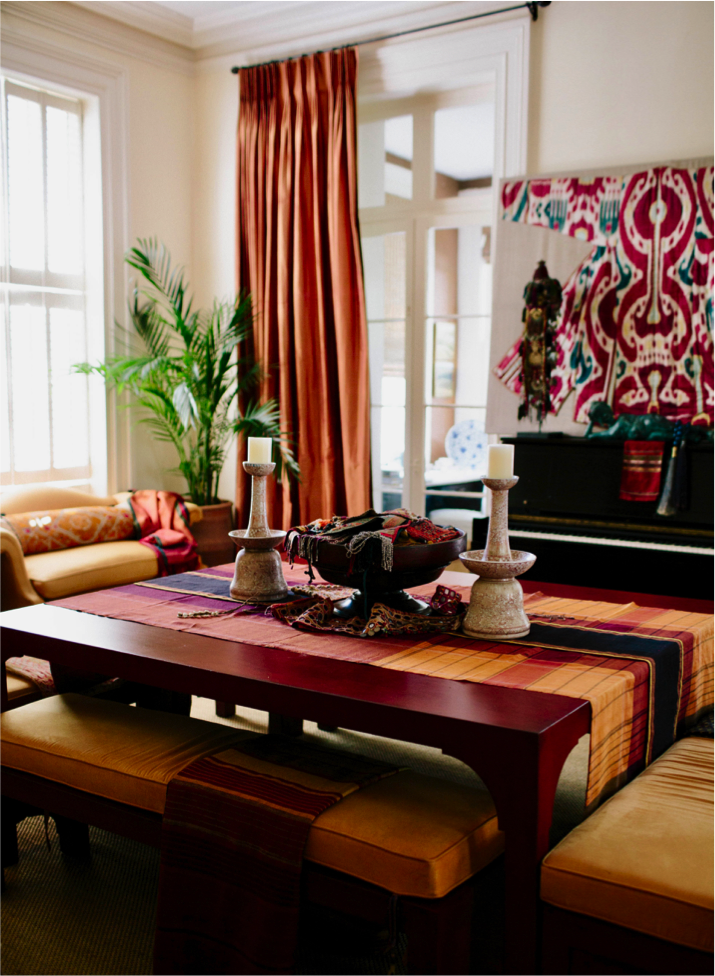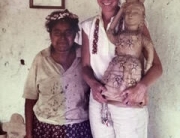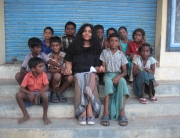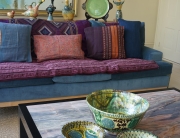I grew up in a home with my father’s academic library on the top floor and my mother’s windowless sewing room in the basement. He was an orator, a man of the word; she a couture-worthy seamstress and homemaker. I perched in-between. Early on, I followed my father’s path into the study of religion at Harvard Divinity School, veering into congregational ministry rather than the classroom. For fifteen years, in Maine, in California, and finally South Carolina, I stood at a pulpit each week interpreting sacred texts and, wondering, always, how a text shining with a woman’s mind might have differed. What values would she have held close, what stories would she have recorded?
Somewhere toward the end of those years, I longed to stop talking about ideas and to learn about the world with my hands. I returned to school at Savannah College of Art and Design and learned to dye, print, stitch, quilt, spin, weave. My hands were awkward and untrained in the art of working with things. It was a steep learning curve, indeed, but it led me into a contemplative practice of weaving.
While at school studying traditional textiles, I had an “aha!” moment so shattering that it changed my life. Of course, women’s stories weren’t collected in written texts, I lit up to realize because for most of human history women couldn’t read and write! But women were spinning, weaving, dyeing, and embroidering their stories into cloth. Textiles, I saw at that moment, are a woman’s sacred text. Her way of illuminating the things, otherwise not recorded, that matter to her.
I began traveling and collecting old remnants of a woman’s language, delving into the different regional accents of palette, symbol, texture. I learned that while, of course, men weave in Africa, in India; still, there is a preponderance of women’s fingerprints all over textiles. I began buying vintage pieces with a total absence of self-control (while otherwise a practical, frugal person), and when I had no more room to stash them, offered them for sale, passing on the stories as I did.
Traveling, I met women who still carried in their hands the textile skills I admired, and who could weave with more brilliance than I would ever achieve at my loom. I came to a crossroads in my life. Do I continue to weave my own original pieces or do I put my energy into creating a market for women who have none?
The women won.
Of course, without fully realizing it at the time, I was returning to bring my mother out of the basement room where she brilliantly created but was never paid or valued for her creating. It became simple and clear – what I want to do in this life: 1) to put money in the hands of women who possess remarkable skills but no income; and 2) to preserve their languages of cloth.

I often throw silk or cotton saris over my table – ones I’ve ferreted from piles in India’s markets. Spilling from the bowl at the table’s center are textile fragments from India, Peru, Laos; and over one of the benches, a striped weaving found in Morocco. The candlesticks are painted by hand in Turkey. Even the table and chairs are artisan-made in Charleston – designed and painted myself.






